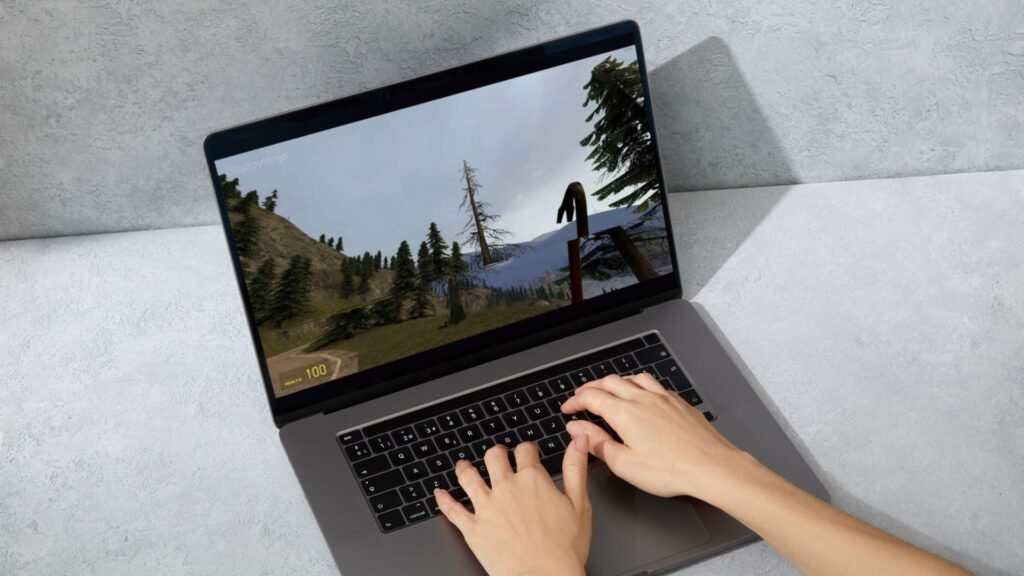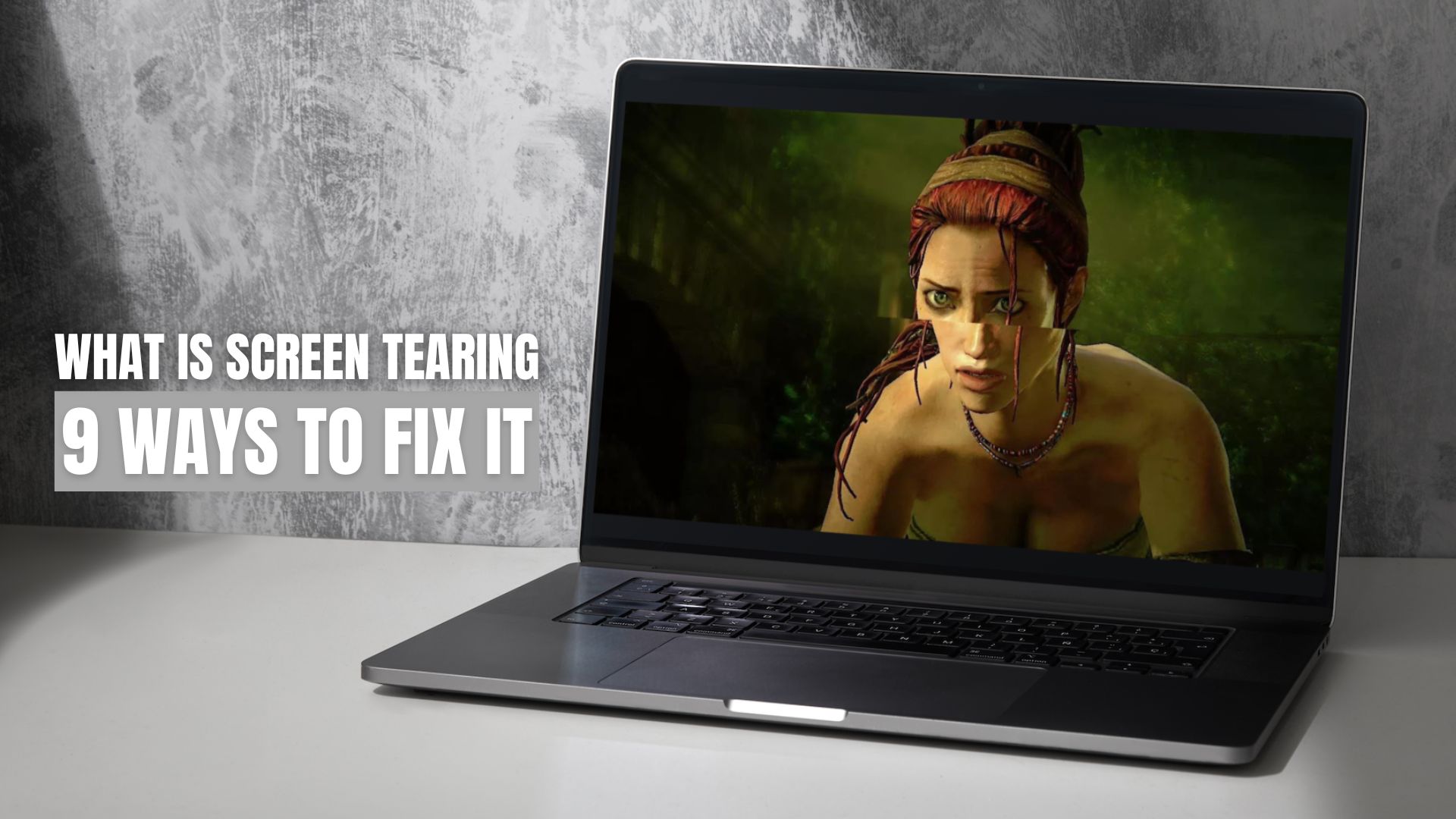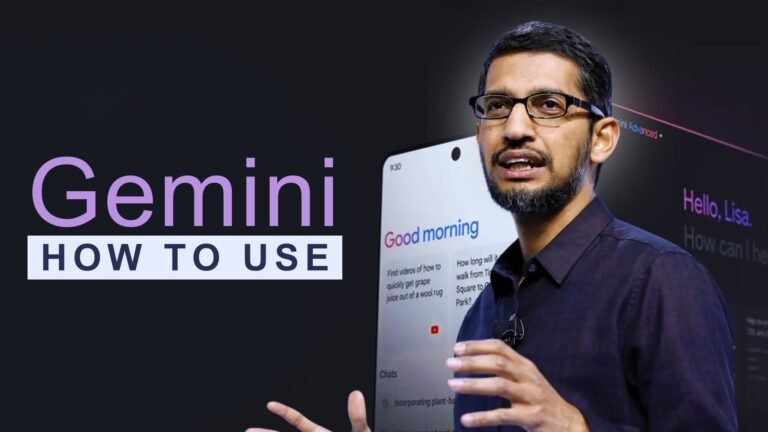When we talk about high-paced gaming or any other tasks that require a high refresh rate and frame rate, the most common problem we face is screen tearing. This is a problem that every user has likely experienced at least once in their life. It can be particularly irritating when watching movies or playing competitive games.
So, what exactly is screen tearing? And how can we fix this problem? I have explained all these details in today’s guide in a comprehensive manner so that you can understand this problem and eliminate it completely.
What is Screen Tearing?
First, let me explain how the image is displayed on the screen so that you can better understand what exactly screen tearing is. The GPU sends all the image data to the monitor then it renders the image pixel by pixel, line by line. This rendering process starts from the top left side of the monitor and finishes at the bottom right side.
Once the scan line order reaches the bottom right side, a complete frame is formed. After that, subsequent frames are rendered in the same manner on the screen. However, this process is so fast that the individual frames are perceived as a continuous video.

When there is a mismatch or misalignment between the new frame and the old frame, a split occurs, and you see a distorted image on the screen. This phenomenon is known as screen tearing.
It occurs when the GPU and the monitor are not properly synced with each other. I mean that the monitor may not support the same refresh rate as the number of frames the GPU can produce. For example, if the monitor supports a refresh rate of up to 120 Hz and your graphics card is running a game at 144 FPS, you may experience screen tearing issues.
This issues are not solely caused by the lack of compatibility between the GPU and the monitor. There are other factors that can contribute to screen tearing problems. For example, heavy background tasks or processes running on the GPU can cause a significant load, preventing it from delivering the required frame rate to the monitor.
How to Fix Screen Tearing? (8 Ways)
Now, I am going to provide you methods to fix screen tearing issue. Please note that certain methods may not be supported by your system, so you can choose the ones that are compatible with your computer.
1. VSync
This is the most common method for fixing screen tearing issues. For those who are not familiar with it, let me explain. VSync is a technology that synchronizes the refresh rate of the monitor with the frame rate of the graphics card. It adjusts the frames to match the monitor’s refresh rate, ensuring that you don’t experience screen tearing.
For example, if the monitor supports a refresh rate of 60 Hz and the GPU is providing 90 FPS, enabling VSync will result in the frame rate being reduced to match the monitor’s refresh rate. This ensures that the video or game runs properly.
Using VSync eliminates tearing, but it also has the drawback of increasing input lag. Many users prefer to enable VSync, especially those who do not want tearing on their monitors. However, there are also people who prefer to disable VSync and use their monitors without it in order to reduce input lag. So, it depends on your personal preference and needs, whether you prioritize a tear-free experience or low input lag.
2. Enable Nvidia Adaptive VSync
Nvidia has developed Adaptive VSync for its GPUs. In this technology, Nvidia has addressed all the drawbacks of traditional VSync, such as the automatic on/off feature. Whenever the frame rate exceeds the refresh rate of the monitor, Adaptive VSync automatically activates itself to eliminate screen tearing. And as soon as the GPU’s frame rate decreases, it automatically turns off to reduce input lag.
Adaptive VSync is mostly available in Nvidia’s GeForce GTX Series. By using it, you can easily enjoy tear-free gaming and movies. If you want to manually enable or disable it, you can do so through Nvidia’s control panel.
3. Nvidia Fast Sync & AMD Enhanced Sync
Nvidia’s Fast Sync and AMD’s Enhanced Sync are alternative options to VSync that help fix screen tearing while minimising input lag compared to VSync enabled.
Let me explain this to you with an example. Let’s say you have a 144 Hz monitor, and you’re playing a game where you’re getting 300 FPS. Enabling Fast Sync or Enhanced Sync will not limit the game’s frame rates; on the contrary, it will prevent screen tearing and reduce input lag. Many gamers believe that higher FPS leads to lower input lag.
To use Fast Sync, you need a minimum Nvidia GeForce 900 series graphics card. On the other hand, to use Enhanced Sync, you need a minimum version of AMD Radeon drivers 17.7.2.
4. Nvidia G-Sync & AMD FreeSync
Nvidia G-Sync and AMD FreeSync are technologies that adjust the refresh rate of monitors according to the GPU’s frame rates.
Let me explain with an example. Suppose you are playing a game and getting 95 FPS, and your monitor has a refresh rate of 144Hz, which supports Variable Refresh Rate (VRR) with a range of 48-144Hz. In this case, your monitor will dynamically adjust its refresh rate to match the 95 FPS, eliminating screen tearing and reducing input lag.
G-Sync is specifically designed for Nvidia graphics cards and requires a monitor with a G-Sync module to work. On the other hand, FreeSync is compatible with both AMD and Nvidia cards (GTX 10-series or newer).
5. Change Monitor Resolution & Refresh Rate
Screen tearing can also occur due to incorrect resolution settings on your monitor. It is possible that your monitor’s resolution is set too high while the refresh rate is low and this problem is very common. Therefore, I have provided steps below that you can follow to adjust your resolution and refresh rate.
- Open Display Settings – right-click on the desktop and select “Display settings“. Now Display Settings will be open.
- You will see Display Resolution, and from drop down menu select the “Recommended Resolution“
- To change refresh rate, scroll down in Display Settings, you will see “Advanced Display” Option
- Use the drop-down menu to choose the highest refresh rate and then select Keep changes.
6. Update Graphics Card Drivers
If graphics drivers are not updated for a long time, you may encounter issues like screen tearing. Moreover, GPU drivers should be updated regularly to ensure optimal gaming performance.
- Search Device manager in the Start Menu and open it.
- In Display adapters section, right click on your graphics card and select Update Driver.
- Open the Driver tab, click Update Driver, and select Search automatically for updated driver software.
Now, if the graphics driver is not updating due to an error, uninstall it and restart your PC. After that, Windows will search for new drivers and install the latest ones.
7. Disable Windows Game Mode
In Windows 10/11, you will find a game mode that is helpful during gaming as it maximizes CPU performance. However, some users have faced screen tearing issues due to game mode being enabled. If you are also experiencing such issues, try disabling Game Mode.
- Press Start Button and Search “Game Mode Settings“
- Now just “Toggle Off Game Mode” and Restart your PC.
8. Disable Windows Game Mode
In Windows, there is also a feature called Smooth Scrolling, which can potentially lead to screen tearing issues. This is because Smooth Scrolling requires the GPU to generate multiple frames, which can result in poor synchronisation between the GPU and the monitor. As a result, the displayed image on the screen can become distorted.Therefore, you can also try disabling this feature in your Windows to see if it resolves the screen tearing problem.
- Press Start and search “Advanced System Settings”
- Tap “Settings” under Performance Section
- Now Uncheck “smooth scrolling list boxes” and click apply to save the settings.
After following this process, restart your computer and check if there is any difference in the tearing issue. If there is no improvement, you can enable Smooth Scrolling again by ticking the checkbox using the steps mentioned above.
FAQ
Yes, you will experience screen tearing issues at 60Hz. Nowadays, 60Hz is a standard refresh rate that works well for basic tasks. However, if you want to do gaming, you will encounter screen tearing issues. For example, if a game is running at 90FPS and your monitor has a refresh rate of 60Hz, you will experience screen tearing. The best solution for this is to use Vsync, which synchronizes the game’s frame rates with the monitor’s refresh rate.
Having a properly functioning HDMI cable is crucial as it carries data from the GPU to the monitor. If the cable is damaged or faulty, the GPU won’t be able to transfer data to the monitor properly. This can result in inconsistencies in frame rate and lead to a fragmented or broken image on the screen. Therefore, if you want to ensure smooth and high-quality frames, it is recommended to invest in a high-quality HDMI cable.
Yes, because it supports advanced features like adaptive sync technology. This technology assists in synchronising the monitor with the GPU’s frame rate, ensuring a smoother gaming experience.
Screen tearing is not directly related to the CPU. The problem arises due to the lack of proper synchronization between the GPU and the monitor. The CPU’s role in this task is to process all the data and provide instructions to the GPU. Therefore, if there is a potential problem with the synchronization between the CPU and the GPU, it could indirectly contribute to screen tearing.
Screen tearing doesn’t directly harm the eyes much, but if this problem occurs repeatedly for a long time, it can cause eye discomfort or pain.
Screen tearing is not permanent at all; it just requires some hardware upgrades and properly setting up the computer settings to fix it.






